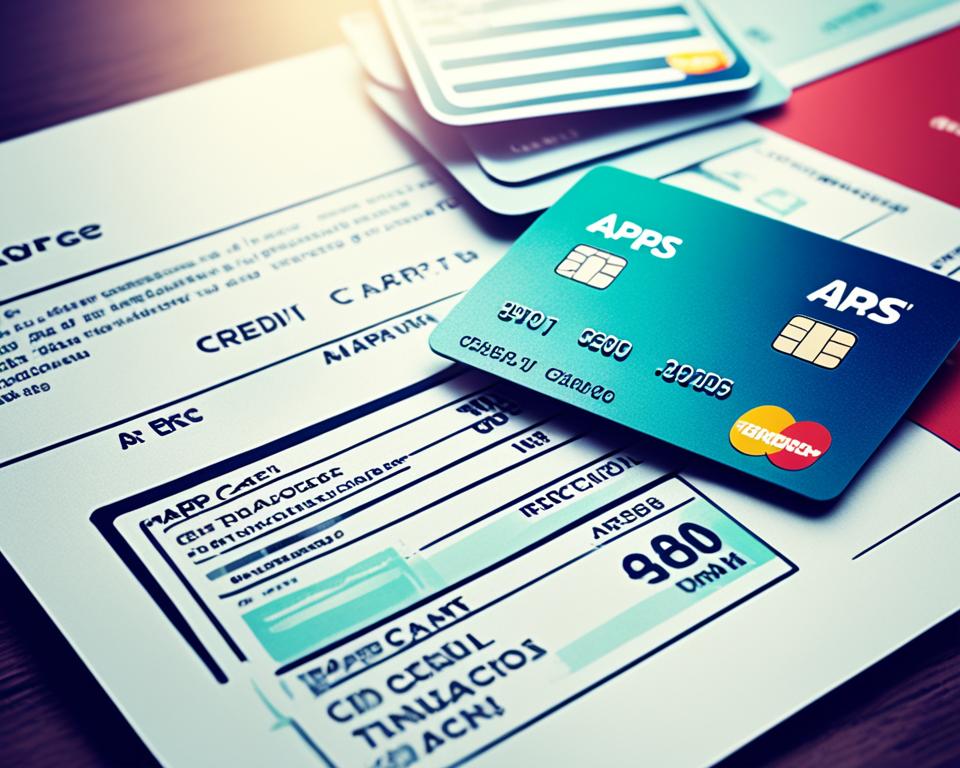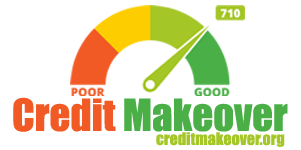When it comes to credit cards, the annual percentage rate (APR) plays a crucial role in determining the cost of borrowing money. However, understanding how credit card APR works can be confusing for many people. In this article, we will demystify the concept of APR and explain how it affects your credit card debt.
APR is essentially the interest rate that applies to your credit card account, expressed as a percentage. It represents the annual cost of borrowing money, including fees, and is a key factor in determining how much interest you will pay on your credit card debt over time.
To calculate APR, credit card companies typically consider various factors, such as your creditworthiness and the prime rate. They use this information to determine the interest rate that will apply to your account.
Key Takeaways:
- APR represents the annual cost of borrowing money on a credit card.
- It includes the interest rate and fees associated with the card.
- APR is crucial in determining the amount of interest you will pay on your credit card debt.
- Credit card companies calculate APR based on various factors, including creditworthiness and the prime rate.
- Understanding how APR works is important in making informed financial decisions and managing your credit card debt effectively.
What is APR?
APR stands for Annual Percentage Rate, and it represents the yearly cost of borrowing money. It includes the interest rate that applies to your credit card account plus other fees related to that account. Credit card companies calculate APR based on an average daily balance and the number of days in the billing cycle. Understanding how APR is calculated is important in determining the impact it has on your credit card debt.
Take a look at the image above to understand visually how APR can impact your credit card debt.
Types of APRs on Credit Cards
When it comes to credit cards, it’s important to understand the different types of APRs that may apply to your transactions. Each type of APR has its own rate and terms, so let’s explore the most common ones:
Purchase APR
The purchase APR is the most common type of APR and applies to general purchases made with your credit card. It is the interest rate that will be charged on your outstanding balance for purchases made.
Introductory APR
Some credit cards offer an introductory APR, which provides a lower interest rate for a limited period of time. This promotional rate is often used to attract new cardholders and can be beneficial for those who plan to make large purchases or transfer balances from other cards.
Balance Transfer APR
A balance transfer APR is the interest rate applied to balances transferred from one credit card to another. It may be lower than the purchase APR, making it an attractive option for consolidating debt or saving on interest charges.
Cash Advance APR
The cash advance APR is charged when you withdraw cash from your credit card. This type of transaction often carries a higher interest rate compared to purchases, and interest begins accruing immediately without a grace period.
Penalty APR
If you fail to make timely payments or exceed your credit limit, you may trigger the penalty APR. This is a significantly higher interest rate that can be imposed as a penalty for certain credit card violations.
Understanding these different types of APRs can help you make informed decisions when using your credit card. It’s important to be aware of the rates and terms that apply to your specific card to effectively manage your credit card debt.
If you’d like to explore these APRs in more detail, refer to the table below for a summarized comparison:
| Type of APR | Definition | Rate | Applicable Transactions |
|---|---|---|---|
| Purchase APR | Interest rate for general purchases | Varies | Purchases made with the card |
| Introductory APR | Promotional rate for a limited time | Lower than regular APR | Purchases and balance transfers |
| Balance Transfer APR | Interest rate for balance transfers | Varies | Balances transferred from other cards |
| Cash Advance APR | Interest rate for cash withdrawals | Higher than regular APR | Cash withdrawals from the card |
| Penalty APR | Higher interest rate as a penalty | Significantly higher than regular APR | Incurred for specific violations |

Key Takeaways
Understanding the various types of APRs on credit cards is crucial for making informed financial decisions. By knowing the rates and terms associated with each type, you can better manage your credit card debt and minimize interest charges. Remember to always read the fine print and compare different credit card offers to find the best APR that suits your needs.
How to Calculate Credit Card Interest
Calculating credit card interest is an essential skill that can help you manage your finances effectively. By understanding the components involved in calculating interest, such as the average daily balance and daily periodic rate, you can make informed decisions about your credit card debt.
To calculate your monthly credit card interest charge, follow these steps:
- Determine the daily periodic rate: The daily periodic rate is the interest rate charged on a daily basis. It is calculated by dividing the annual percentage rate (APR) by 365.
- Find the average daily balance: The average daily balance is the sum of your outstanding balance throughout the billing cycle divided by the number of days in that cycle.
- Multiply the average daily balance by the daily periodic rate: Multiply the average daily balance by the daily periodic rate to calculate the daily interest charge.
- Multiply the daily interest charge by the number of days in the billing cycle: Multiply the daily interest charge by the number of days in the billing cycle to determine the total interest charge for that period.
Here’s an example to illustrate the calculation:
Let’s say you have an average daily balance of $1,000 and an APR of 18%. Your billing cycle is 30 days.
The daily periodic rate would be 0.0493% (18% divided by 365).
The daily interest charge would be $0.49 (0.0493% multiplied by $1,000).
The total interest charge for the billing cycle would be $14.70 ($0.49 multiplied by 30 days).
By understanding how credit card interest is calculated, you can have a clearer picture of the cost of carrying a balance on your credit card. This knowledge empowers you to make informed decisions about your finances and take steps to reduce interest charges.
Calculating credit card interest is just one aspect of managing your credit card debt. In the next section, we will explore the differences between variable APR and fixed APR and how they can impact your credit card charges.
Variable APR vs. Fixed APR
When it comes to credit cards, understanding the difference between variable APR and fixed APR is essential in making informed financial decisions. Let’s take a closer look at the characteristics of each APR type and how they can impact your credit card debt.
Variable APR
Variable APR, as the name suggests, can change over time based on the Prime Rate. The Prime Rate is an interest rate that major banks charge their most creditworthy customers. When the Prime Rate increases or decreases, the variable APR on your credit card may follow suit.
The advantage of a variable APR is that if the Prime Rate decreases, you may end up paying less interest on your credit card balance. On the other hand, if the Prime Rate goes up, your variable APR may increase, resulting in higher interest charges.
Fixed APR
In contrast, a fixed APR remains unchanged for a specified period of time. With a fixed APR, you have the advantage of knowing exactly what your interest rate will be throughout that period, regardless of changes in the Prime Rate.
This stability can be beneficial if you prefer predictability in your credit card payments. It allows you to plan your finances accordingly without the worry of unexpected increases in interest charges.
However, keep in mind that fixed APRs may still change in certain situations, such as when introductory rates expire or if you miss payments and trigger penalty APR. It is important to review the terms and conditions of your credit card agreement to fully understand the details of your fixed APR.
Choosing Between Variable and Fixed APR
The decision between variable and fixed APR ultimately depends on your financial goals, risk tolerance, and current economic conditions. If you anticipate that interest rates may decrease in the near future, a variable APR could potentially save you money. Conversely, if you prefer the stability of a consistent interest rate, a fixed APR may be the better choice.
It is important to note that variable APRs are often associated with credit cards, whereas fixed APRs are more commonly found with installment loans, such as mortgages or personal loans.
By understanding the difference between variable and fixed APR, you can make an informed decision when selecting a credit card that aligns with your financial needs and preferences. Before making a decision, carefully review the terms and conditions of any credit card offer to ensure you fully understand the APR structure and how it may impact your credit card debt.

Factors Affecting APR
When it comes to the APR on your credit card, several factors come into play, including your credit score and creditworthiness. Lenders take these factors into account when evaluating your application and determining the APR that will apply to your account.
Credit Score: Your credit score is a numerical representation of your creditworthiness. It is influenced by various factors such as payment history, credit utilization, length of credit history, and new credit applications. A higher credit score indicates a lower risk of defaulting on payments and can help you secure a lower APR on your credit card.
“Maintaining a good credit score is crucial for securing better APR offers on credit cards.”
Creditworthiness: Creditworthiness refers to how suitable you are as a borrower in the eyes of lenders. It is based on factors such as income, employment history, and existing debt obligations. Lenders assess your creditworthiness to gauge the likelihood of you repaying your credit card debt. Those with a solid credit history and stable income are considered more creditworthy, which can lead to a lower APR.
To improve your creditworthiness and increase your chances of securing a lower APR, it’s important to maintain responsible financial habits. This includes paying your bills on time, avoiding maxing out your credit limits, and regularly monitoring your credit reports for any errors or discrepancies.
Summary of Factors Affecting APR
| Factors | Impact on APR |
|---|---|
| Credit Score | Higher score can lead to lower APR |
| Creditworthiness | Greater creditworthiness can result in a reduced APR |
Different APRs for Different Transactions
Credit cards come with different APRs depending on the type of transaction. It’s important to understand these APRs and how they impact your credit card debt. Below are the different APRs you may encounter:
Purchase APR
The purchase APR is the most common APR and applies to general purchases made with your credit card. It represents the interest rate charged on the amount you owe for your purchases. It’s essential to be aware of this APR as it directly affects the cost of your credit card debt.
Balance Transfer APR
The balance transfer APR applies when you transfer balances from one credit card to another. This APR is typically different from the purchase APR and may offer promotional rates or special terms for a limited time. It’s important to consider this APR when deciding to transfer balances to a new credit card.
Cash Advance APR
The cash advance APR is applicable when you withdraw cash from your credit card. This APR is usually higher than the purchase APR and may come with additional fees for cash advances. It’s crucial to be mindful of this APR as it can quickly accumulate higher interest charges.
Understanding these different APRs is important for managing your credit card debt effectively. Now, let’s take a look at a comparison table that highlights the key differences between these APRs:
| APR Type | Definition | Typical Range |
|---|---|---|
| Purchase APR | The interest rate for general purchases | Variable, typically 15-25% |
| Balance Transfer APR | The interest rate for transferred balances | Variable, may include promotional rates |
| Cash Advance APR | The interest rate for cash withdrawals | Variable, typically higher than purchase APR |
As you can see from the table, each APR has its own characteristics and implications. It’s crucial to consider these factors when using your credit card to make informed financial decisions and effectively manage your credit card debt.

Next, we’ll explore introductory APR offers and how they can impact your credit card usage and debt. Stay tuned!
Introductory APR Offers
Looking for a credit card that can help you save on interest? Take advantage of introductory APR offers, which provide a lower or even 0% APR for a limited time. These limited-time promotions are designed to help you manage your credit card debt and avoid paying interest during the promotional period. If you’re considering making a big purchase or transferring a balance, an introductory APR offer can be a smart choice.
With an introductory APR offer, you can enjoy a lower interest rate or even no interest on your credit card balance for a specific period of time. This allows you to pay off your debt faster and potentially save money on interest charges. These offers typically apply to new purchases or balance transfers, giving you the opportunity to consolidate your debt or make a big purchase without incurring high interest costs.
It’s important to note that introductory APR offers are usually promotional and time-limited, so it’s crucial to understand the terms and expiration date. Once the promotional period ends, the APR will revert to the regular rate, which could be higher. Be sure to carefully review the terms and conditions to ensure you fully understand the details of the offer.
Benefits of Introductory APR Offers:
- Lower or 0% interest rate for a limited time
- Opportunity to save on interest charges
- Potential for faster debt repayment
- Consolidate debt or make big purchases without high interest costs
Introductory APR offers can be a valuable tool in managing your credit card debt and achieving your financial goals. Whether you’re looking to pay off existing debt or make a large purchase, taking advantage of these limited-time promotions can provide significant savings. Just remember to read the fine print and ensure you understand the terms and conditions before making a decision.
Importance of Maintaining a Good Credit Score
Maintaining a good credit score is crucial when it comes to applying for a credit card and securing a lower APR. Credit card issuers consider your credit score as a reflection of your creditworthiness and use it to assess the risk associated with lending you money. People with higher credit scores are more likely to qualify for lower APRs, while individuals with lower scores may face higher interest charges.
By paying bills on time and practicing responsible financial habits, you can establish and maintain a good credit score. This includes making timely payments, keeping your credit utilization low, and avoiding late payments or defaults. A good credit score not only improves your chances of getting approved for a credit card but also provides leverage to negotiate lower APRs with credit card issuers.
Benefits of a Good Credit Score
- Lower APR: A good credit score demonstrates your creditworthiness to lenders, increasing the likelihood of being offered lower interest rates on credit cards. This can save you money in the long run by reducing the overall interest charges on your credit card debt.
- Access to Better Credit Card Offers: With a good credit score, you are more likely to qualify for credit cards with attractive rewards programs, sign-up bonuses, and favorable terms. These offers can further enhance your credit card experience and provide additional benefits beyond just a lower APR.
- Improved Borrowing Opportunities: In addition to credit cards, a good credit score opens up opportunities for obtaining favorable terms on other types of loans, such as mortgages or auto loans. Lenders are more willing to lend money at competitive interest rates to individuals with a proven track record of responsible credit management.
Overall, maintaining a good credit score is essential for maximizing your credit card options and minimizing the cost of borrowing money. It is a key factor in determining the APR you will be offered and can significantly impact your financial well-being.

| Credit Score Range | Qualification | APR Range |
|---|---|---|
| Excellent (750+) | Highly Qualified | 10% – 15% |
| Good (700-749) | Well Qualified | 15% – 20% |
| Fair (650-699) | Moderately Qualified | 20% – 25% |
| Poor (600-649) | Somewhat Qualified | 25% – 30% |
| Bad (below 600) | Less Qualified | 30% or higher |
Avoiding Interest Charges
To avoid paying interest charges on credit card purchases, it is important to pay off the balance in full by the payment due date. By doing so, you can take advantage of the grace period offered by credit card companies, which is usually around 23 days. Within this period, credit card companies typically do not charge interest on purchases if the balance is paid in full.
By paying off your balance on time, you can avoid accruing interest and reduce the overall cost of your credit card debt. This practice enables you to take full advantage of the benefits provided by your credit card, such as rewards programs or cashback offers, without incurring additional charges.
It’s crucial to manage your finances responsibly and stay on top of your credit card payments to avoid interest charges. By paying off your balance in full each month, you can maintain control over your credit card debt and prevent unnecessary interest expenses from accumulating.
Maximizing the Grace Period
Understanding the grace period and its implications on interest charges is essential for effectively managing your credit card debt. Here are some tips to help you maximize the benefits of the grace period:
- Know your payment due date: Mark your calendar with the payment due date for each credit card to ensure you don’t miss any payments.
- Set up automatic payments: Consider setting up automatic payments to ensure your balance is paid in full before the due date, thereby avoiding interest charges.
- Monitor your credit card statement: Regularly review your credit card statement to ensure there are no errors or unauthorized charges that could affect your balance. Address any discrepancies promptly with your credit card issuer.
- Create a budget: Develop a budget that allows you to allocate funds to pay off your credit card balance in full each month. This will help you stay on track and avoid interest charges.
| Advantages of Paying Off Your Balance | Disadvantages of Carrying a Balance |
|---|---|
|
|
By paying off your credit card balance in full and within the grace period, you can avoid unnecessary interest charges and maintain control over your financial well-being.
Remember, the grace period provides an opportunity to avoid paying interest on your credit card purchases, and taking advantage of this benefit can help you stay on top of your finances. By paying your balance in full and on time, you can effectively manage your credit card debt and reduce the unnecessary costs associated with interest charges.
Making Informed Credit Card Decisions
When it comes to choosing a credit card, making informed decisions is crucial. To do so, understanding how credit card APR works is essential. By comparing APRs and terms, individuals can find the right card that suits their financial needs and offers a favorable APR. However, it’s important to go beyond the surface and dig into the fine print.
By reading and understanding the terms and conditions of each credit card offer, individuals can avoid surprises and make smart financial choices. The fine print is where crucial details lie, including information about how APR is applied, promotional APR offers, and any applicable fees.
One way to evaluate credit card offers is by comparing APRs. This allows individuals to assess the cost of borrowing money and determine which card offers a more favorable rate. However, it’s essential to consider other factors, such as annual fees, rewards programs, and credit card benefits, to make a well-rounded decision.
Finding the Perfect Fit
Each individual’s financial situation and goals are unique, so it’s important to find a credit card that aligns with those needs. Some may prioritize low APRs and no annual fees, while others may value robust rewards programs. Taking the time to evaluate and compare offers ensures that individuals find a card that suits their specific requirements.
Furthermore, individuals should consider their current financial habits and payment preferences. For those who pay their balance in full each month, APR may be less of a concern, as no interest would accrue. However, individuals who carry a balance may benefit from seeking out low APR options to minimize interest charges.
Ultimately, making informed credit card decisions requires careful consideration of all aspects of an offer – not just the APR. By doing so, individuals can choose a credit card that meets their financial needs, offers competitive terms, and helps them achieve their financial goals.
Common Misconceptions About APR
There are several common misconceptions about APR on credit cards. One misconception is that APR and credit card interest are the same, when in fact, APR represents the total cost of borrowing money, while interest is just a part of it. APR includes both the interest rate and any additional fees associated with the credit card account, such as annual fees or balance transfer fees.
Another misconception is that fixed APRs never change, when in reality, certain events can cause a fixed APR to change. For example, if a cardholder misses a payment or makes a late payment, the credit card issuer may increase the fixed APR as a penalty. It’s important to read the credit card’s terms and conditions to understand under what circumstances a fixed APR can change.
Understanding these misconceptions is crucial for making wiser financial decisions and avoiding misunderstandings about credit card APR. By knowing the difference between APR and credit card interest, as well as the potential changes in a fixed APR, individuals can better assess the true cost of borrowing and choose credit cards that align with their financial goals.
| Misconception | Reality |
|---|---|
| APR is the same as credit card interest. | APR includes both the interest rate and additional fees. |
| Fixed APRs never change. | Fixed APRs can change under certain circumstances. |
The Importance of Reading the Fine Print
When it comes to credit cards, it’s crucial to read the fine print, especially the terms and conditions. By taking the time to understand the details, you can gain valuable insights into the APR and other important aspects of the credit card offer. This will help you make well-informed decisions and avoid any surprises that could lead to unexpected fees or high interest charges.
The fine print contains essential information about how the APR is applied, including any promotional APR offers. It also outlines the various terms, fees, and conditions associated with the credit card. By carefully reviewing this information, you can fully comprehend the cost of borrowing money and how it will impact your finances.
One important aspect to consider when reading the fine print is the promotional APR offers. These limited-time offers may provide a lower or even 0% APR for a specific period, such as purchases or balance transfers. Understanding the terms and expiration dates of these offers is crucial to avoid any unexpected interest charges once the promotional period ends.
Additionally, the fine print will provide you with a comprehensive understanding of the credit card’s terms and conditions. This includes details about late payment fees, penalty APRs, and any other charges that may apply. Having this knowledge allows you to plan your finances more effectively and make responsible credit card usage decisions.
“By reading and understanding the fine print, you can make well-informed decisions and avoid unexpected fees or high interest charges.”
Reading the fine print is a critical step in the credit card application process. It ensures that you fully grasp the terms and conditions associated with your chosen card, including the APR and any other charges that may apply. This knowledge empowers you to make smart financial choices and select a credit card that aligns with your needs and financial goals.
Key Considerations When Reading the Fine Print
| What to Look For | Why It Matters |
|---|---|
| Promotional APR offers | Understanding the terms and conditions of limited-time offers can help you avoid unexpected interest charges. |
| Penalty APRs and fees | Being aware of potential penalty APRs and fees allows you to avoid costly consequences for late payments. |
| Other charges | Knowing about additional charges, such as balance transfer fees, can help you plan your financial transactions strategically. |
Tips for Managing Credit Card Debt
Managing credit card debt involves responsible use of your credit card and effective repayment strategies. By paying off the balance in full each month, you can avoid accruing interest charges. If you cannot pay off the balance in full, it is important to make larger payments to reduce the outstanding balance and minimize the overall interest charges. Additionally, considering balance transfer options or consolidating debt can help reduce interest charges and make it easier to manage credit card debt.
One effective strategy for managing credit card debt is to create a budget and prioritize your debt payments. Start by listing all your credit card balances and their respective interest rates. Determine how much money you can allocate towards debt repayment each month, and consider allocating more funds towards the credit card with the highest interest rate. By focusing on high-interest debt first, you can reduce the overall interest charges and work towards paying off your balances more quickly.
Another option to consider is a balance transfer. This involves transferring the balance from one credit card to another with a lower interest rate. Many credit card issuers offer promotional or introductory APRs for balance transfers, allowing you to consolidate your debt onto one card with a lower interest rate. Be sure to read the terms and conditions of the balance transfer offer, as there may be fees associated with the transfer and a limited promotional period.
Consolidating your debt through a personal loan is another strategy to reduce interest charges and simplify your payments. With a personal loan, you can pay off your credit card balances and then make fixed monthly payments towards the loan. Personal loans often have lower interest rates compared to credit cards, which can save you money on interest charges over time.
In addition to paying off your balances and exploring consolidation options, it’s important to avoid accumulating more debt. Use your credit card responsibly and only charge what you can afford to pay off in full each month. Avoid making minimum payments, as this can lead to high interest charges and a longer repayment timeline.
By effectively managing your credit card debt, you can reduce interest charges, pay off your balances, and improve your financial well-being. Remember to budget, prioritize debt repayment, explore balance transfer options, and consolidate your debt when appropriate. By taking control of your credit card debt, you can achieve financial stability and peace of mind.
Key Takeaways:
- Paying off your credit card balance in full each month can help you avoid accruing interest charges.
- If you can’t pay off your balance in full, make larger payments to reduce the outstanding balance and minimize interest charges.
- Consider balance transfer options or consolidating debt to lower interest charges and simplify repayment.
- Create a budget and prioritize debt payments to effectively manage credit card debt.
- Use your credit card responsibly and avoid accumulating more debt.
Conclusion
Understanding how credit card APR works is essential for effectively managing your credit card debt. By familiarizing yourself with the calculation of APR, the different types of APRs, and strategies to avoid interest charges, you can make informed financial decisions and minimize the overall cost of borrowing money.
To begin, it is important to recognize that APR represents the annual cost of borrowing money, and includes fees, expressed as a percentage. By knowing how APR is calculated, such as by considering the average daily balance and the number of days in the billing cycle, you can better understand its impact on your credit card debt.
Furthermore, being aware of the various types of APRs on credit cards, such as purchase APRs, balance transfer APRs, and cash advance APRs, allows you to assess how each type affects specific transactions and influences your overall debt. Additionally, understanding the difference between variable and fixed APRs helps you choose a credit card that best suits your financial needs and offers a stable or flexible interest rate.
Finally, maintaining a good credit score, comparing credit card offers, and carefully reading the fine print empowers you to secure favorable APR terms. Such efforts can lead to lower interest rates, ultimately reducing the cost of borrowing money and enabling you to manage your credit card debt more effectively.
FAQ
What is APR?
APR stands for Annual Percentage Rate and represents the yearly cost of borrowing money, including the interest rate and other fees related to a credit card account.
What are the types of APRs on credit cards?
Credit cards can have various types of APRs, including purchase APR, balance transfer APR, cash advance APR, and penalty APR.
How do you calculate credit card interest?
Credit card interest is calculated based on the average daily balance and the daily periodic rate, which is determined by dividing the APR by 365.
What is the difference between variable and fixed APR?
Variable APR can change based on the Prime Rate, while fixed APR remains the same for a certain period of time.
What factors affect APR?
Factors such as credit score and creditworthiness can influence the APR offered by credit card companies.
Are there different APRs for different transactions?
Yes, credit cards may have different APRs for various transactions, such as purchase APR, balance transfer APR, and cash advance APR.
What are introductory APR offers?
Introductory APR offers provide a lower or 0% APR for a limited period of time, usually for purchases or balance transfers.
How important is maintaining a good credit score?
Maintaining a good credit score is crucial for securing a lower APR on a credit card and qualifying for better rates.
How can I avoid interest charges on my credit card?
To avoid paying interest charges, it is important to pay off the credit card balance in full by the payment due date.
How can I make informed credit card decisions?
By understanding how APR works and comparing offers, you can make informed credit card decisions that suit your financial needs.
What are some common misconceptions about APR?
Some common misconceptions about APR include confusing it with credit card interest and assuming that fixed APRs never change.
Why is it important to read the fine print?
Reading the fine print, including the terms and conditions of a credit card offer, is crucial for understanding the APR and other important details.
How can I effectively manage credit card debt?
Effective management of credit card debt involves responsible use of the card, paying off the balance in full or making larger payments, and considering balance transfer or consolidation options.
What is the conclusion of understanding how credit card APR works?
Understanding how credit card APR works is essential for making informed financial decisions and minimizing the cost of borrowing money.





